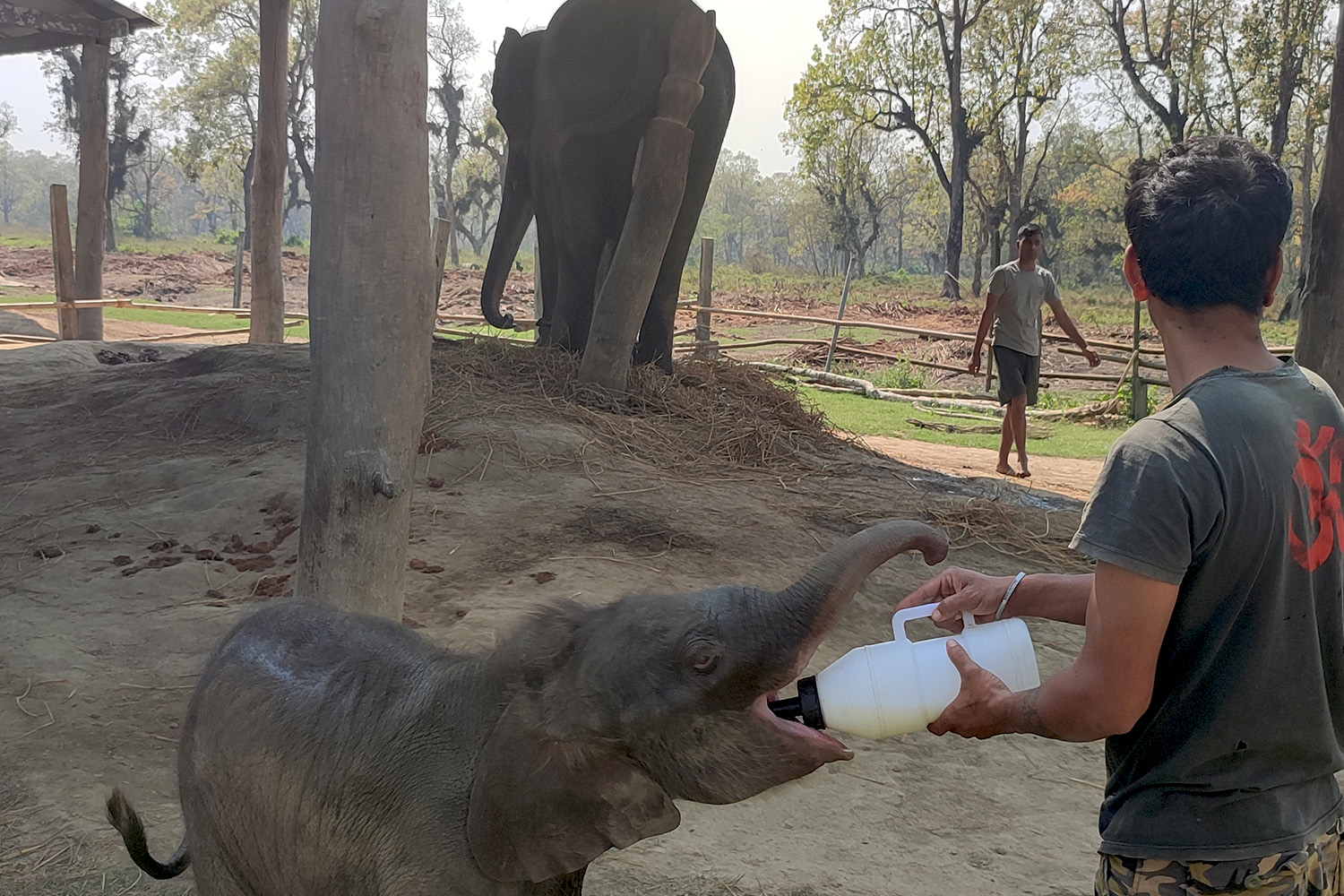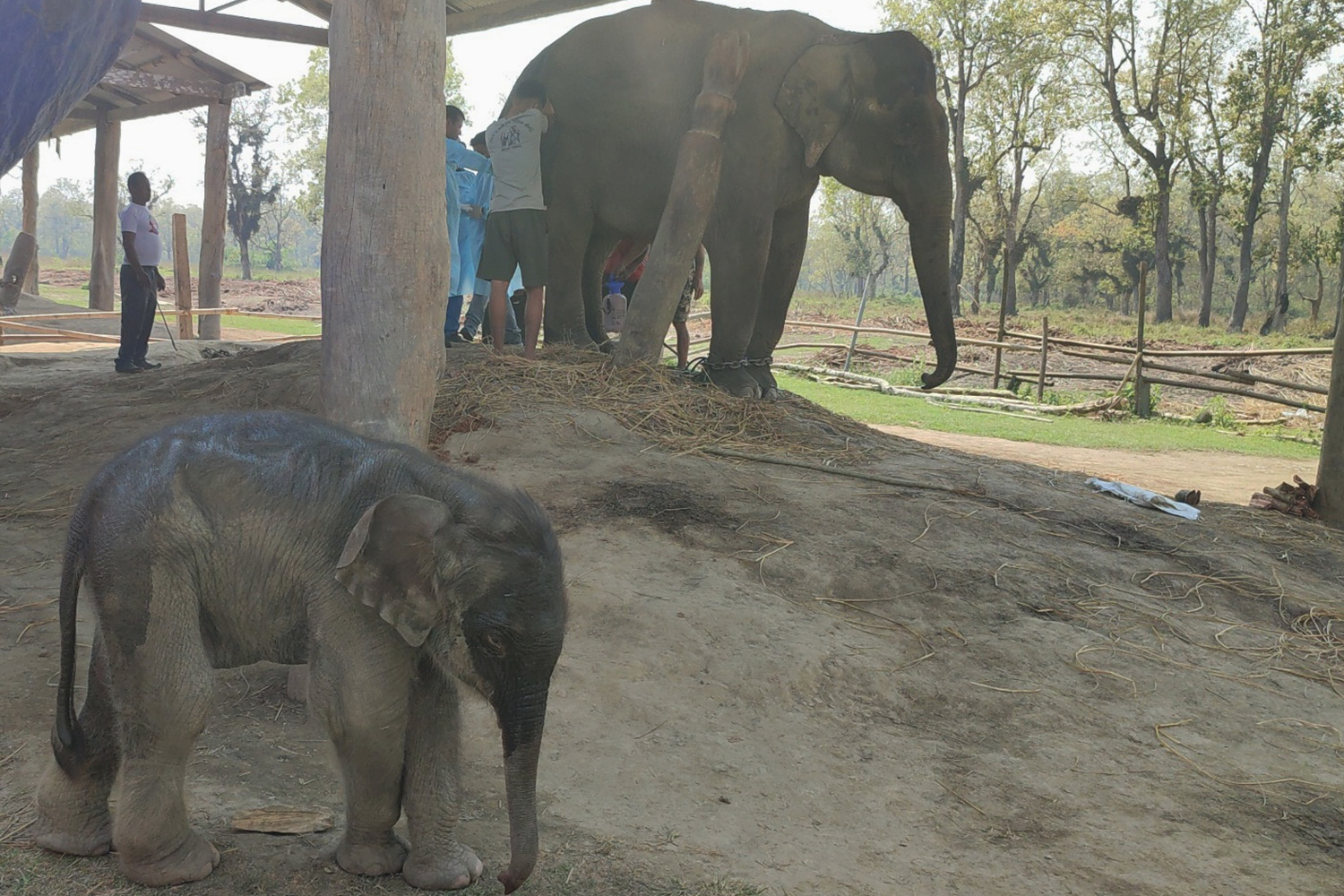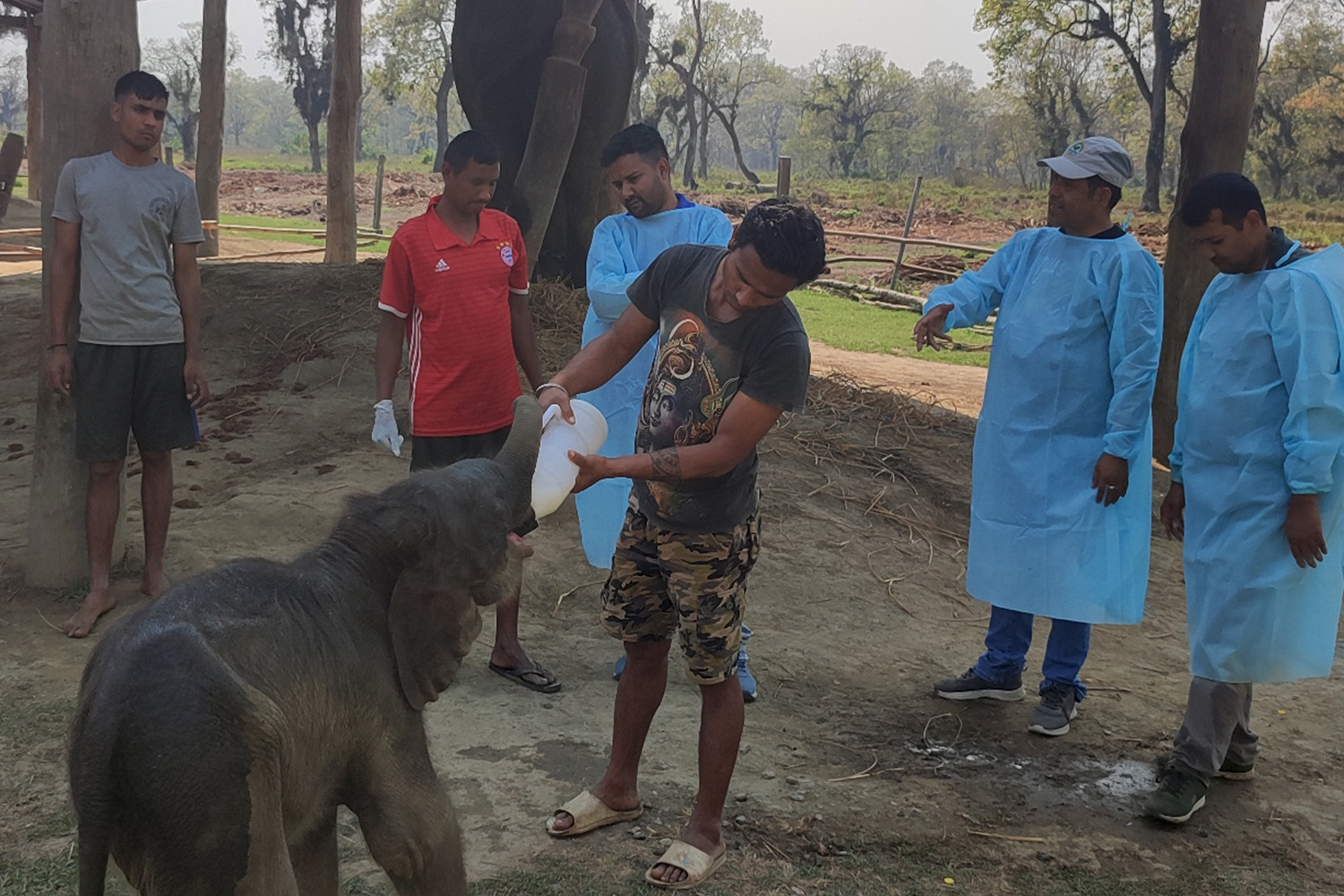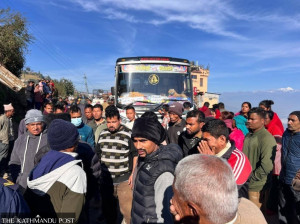Bagmati Province
Elephant calf born by C-section
In a rare veterinary feat in Nepal, an elephant calf was delivered by Cesarean section at the Elephant Breeding Centre in Khorsor, Chitwan on March 8.
Ramesh Kumar Paudel
A nine-day-old male elephant calf born in the Khorsor Elephant Breeding Centre in Sauraha, Chitwan is extremely restless, says his caretaker Uma Shankar Chaudhary.
When it gets hungry, the calf follows Chaudhary. Chaudhary prepares a mixture of powdered milk and water, divides a litre of the mixture into two batches and feeds the calf every two hours.
The calf in question is no ordinary pachyderm offspring. The latest addition to the breeding centre has garnered heightened attention from the officials and caretakers at the breeding centre. The attention is perhaps deserved for he was delivered through the caesarean section (C-section).
The breeding centre claims that the calf’s birth is one-of-a-kind since it was the first ever elephant calf to be born via C-section in Nepal.

Terming the surgical procedure a rare veterinary feat, veterinarian Amir Sadaula says it is a first of its kind in Nepal.
On March 8, a team of veterinarians and medical technicians from the Chitwan National Park and the National Trust for Nature Conservation performed a C-section on an elephant called Gandakikali at the breeding centre.
“Even after two days of labour pains, the elephant was unable to give birth,” said Dr Vijaya Kumar Shrestha, a veterinarian at the Chitwan National Park. “We went ahead with the surgery hoping to at least save the mother elephant.”

According to Shrestha, Gandakikali experienced labour pains on March 7 but was unable to give birth. Her labour pains returned the following morning but she still could not give birth. After her repeated attempts to push the baby out were unsuccessful, she was taken for a medical checkup.
A video x-ray revealed that a surgery was necessary. Then on March 8, Shrestha, along with National Trust for Nature Conservation veterinarians Sadaula and Bikalpa Karki, and animal health technicians Kiran Raj Rijal and Dinesh Dhakal, immediately performed a three-hour-long surgery.
“We administered partial anaesthesia around the cervical opening and made a foot-long opening to pull out the calf,” Shrestha said. “Since the calf’s heart wasn’t beating, we had to perform artificial respiration via the trunk to bring it to life.”

Three years ago, Gandakikali had experienced a similar birth complication. Unfortunately, the calf died after being forcibly pulled out. Fearing the same would happen, the veterinarians performed a surgery, Shrestha added.
“Gandakikali’s surgery wounds are being medically treated and is currently kept under supervision,” Sadaula informed. “Shrestha and the medical technicians personally attend to the elephant every noon to administer the medicines.”
Gandakikali’s recovery has been positive. Curiously, however, she has been distancing herself from her newborn. “The calf had tried to get close to the mother, but was pushed away,” said Manipuran Chaudhary, head of the breeding centre.

Medical technician Rijal believes that this isn’t uncommon. “We have often witnessed mother elephants avoiding their newborns,” he said.
Rijal adds that Gandakikali will eventually adopt her newborn. “Even if she doesn’t, we will take care of the calf.”
The Khorsore-based Elephant Breeding Centre was established in 1985 for the captive breeding of domesticated elephants. The first elephant calf was born in November of the same year. According to Manipuram Chaudhary, so far, 62 elephant births have been recorded at the centre. Training of the calves for commercial use starts as early as three years of age.




 7.12°C Kathmandu
7.12°C Kathmandu1.jpg)











